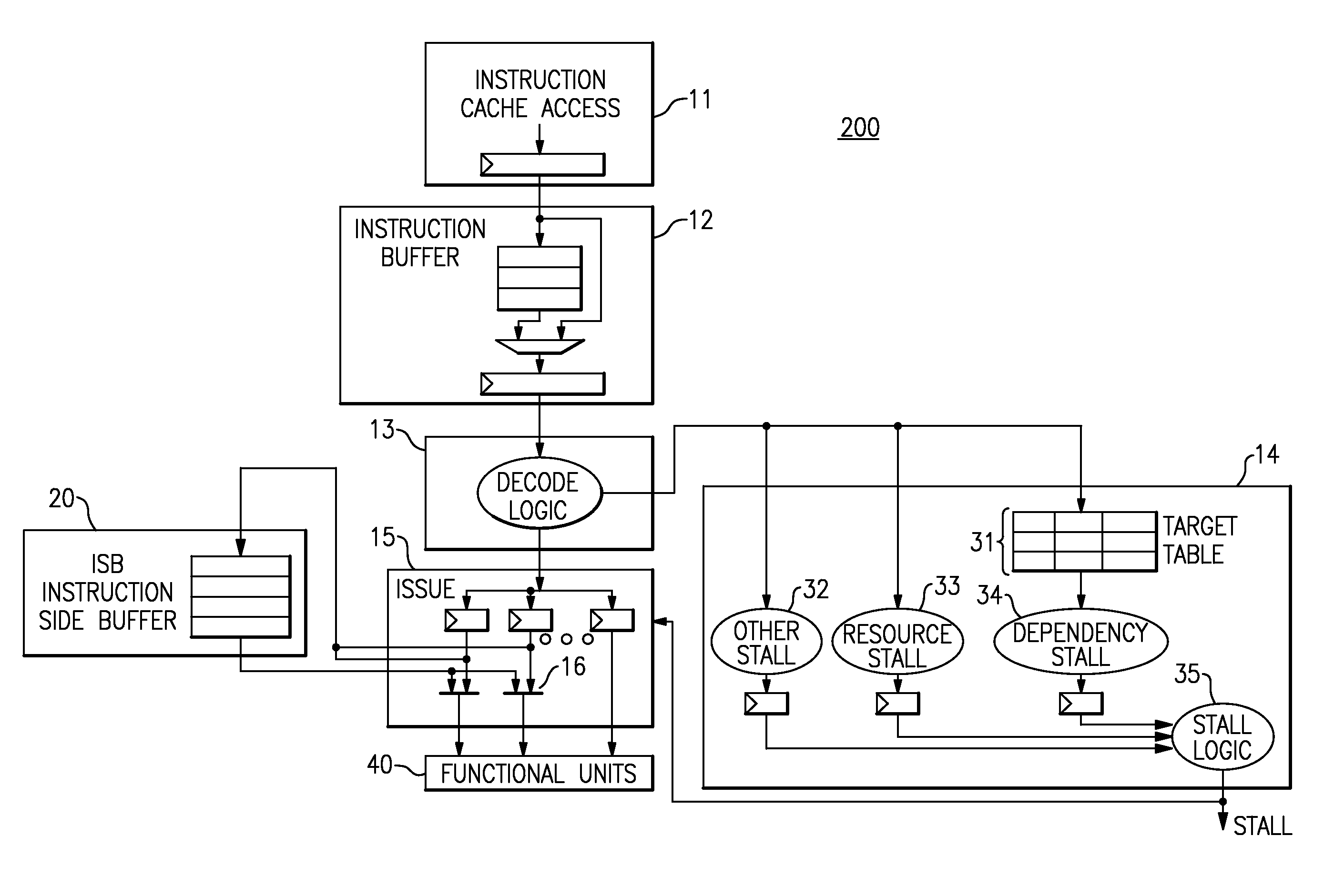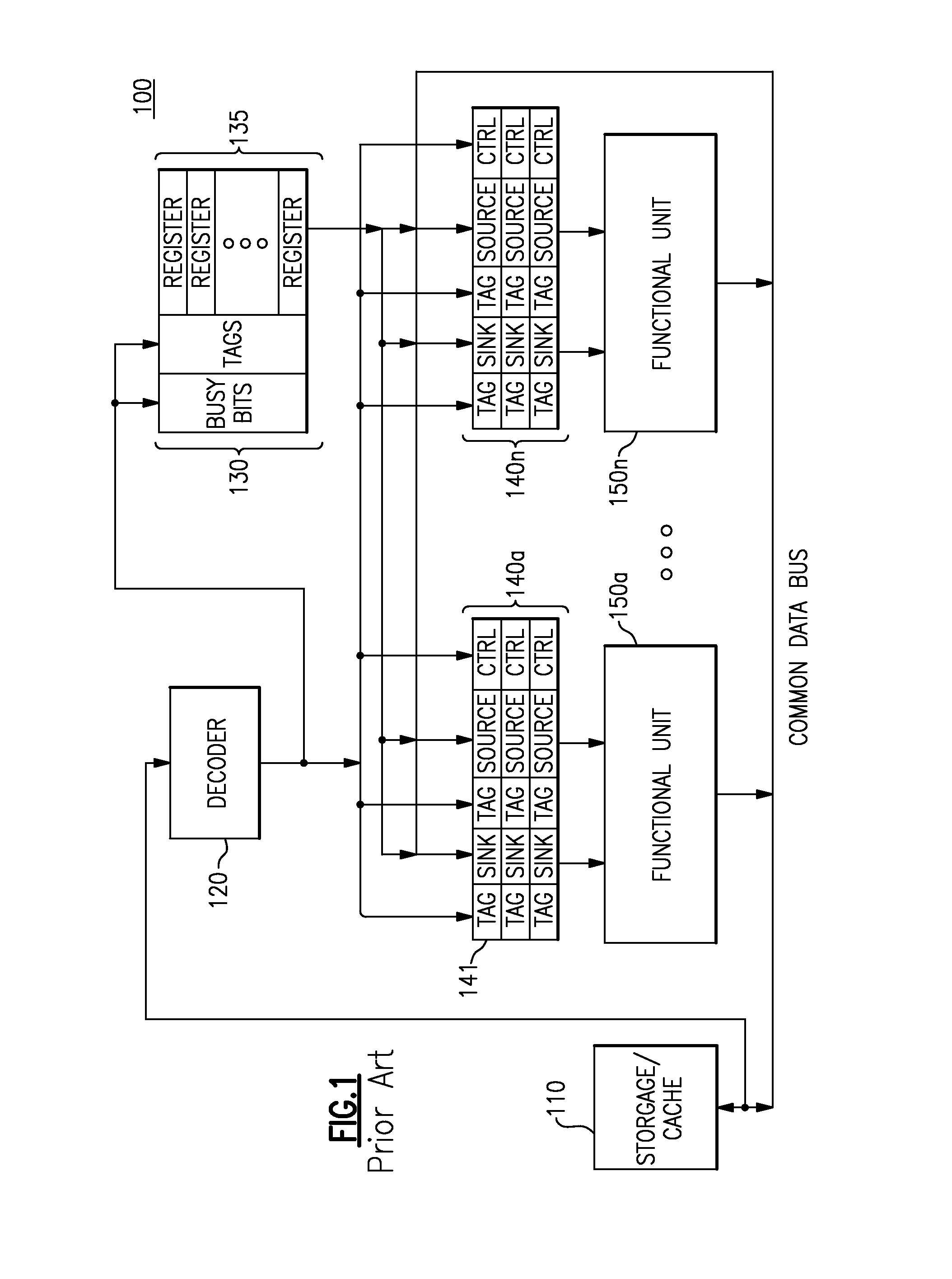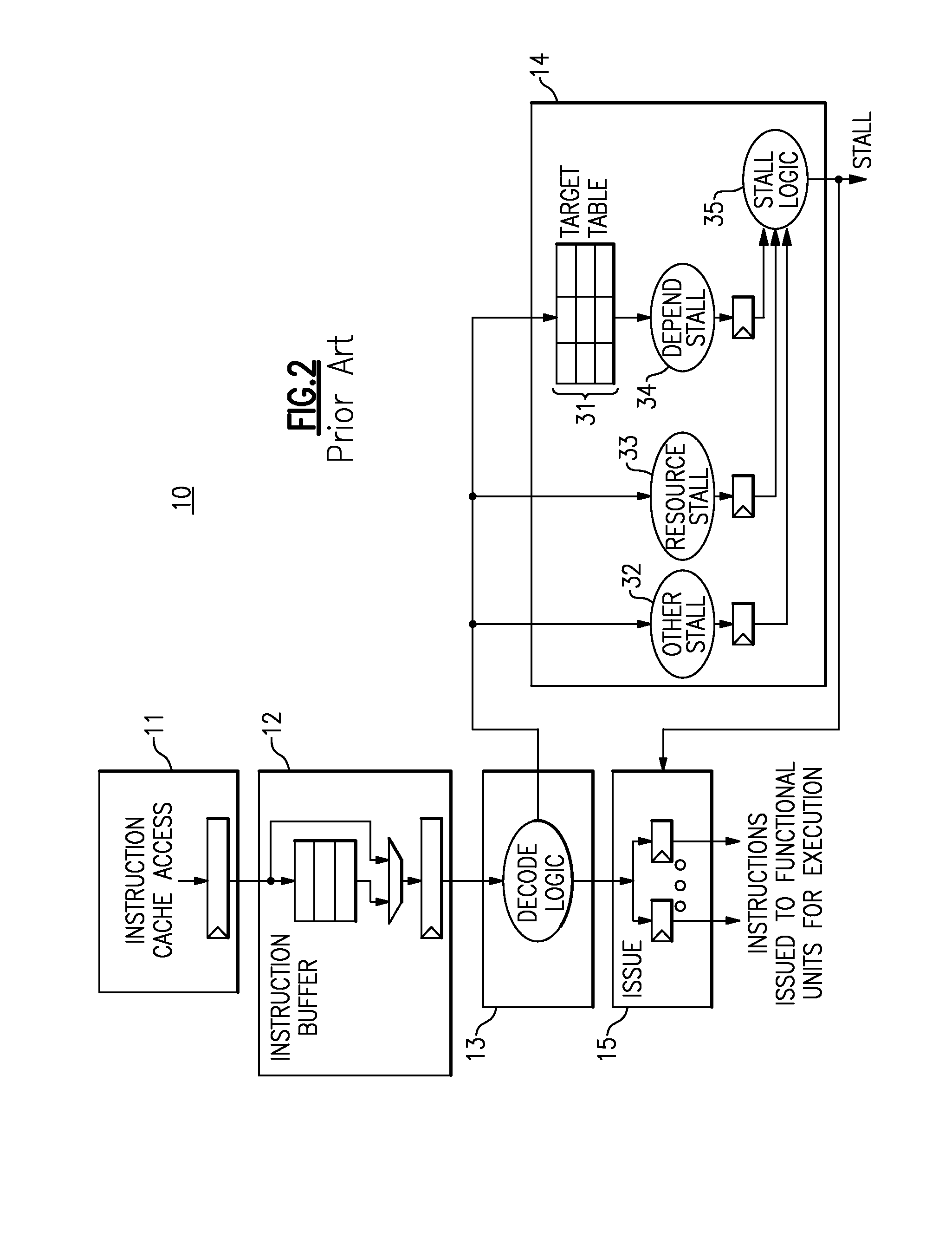Symbolic Execution of Instructions on In-Order Processors
- Summary
- Abstract
- Description
- Claims
- Application Information
AI Technical Summary
Problems solved by technology
Method used
Image
Examples
Embodiment Construction
[0022]The symbolic execution mechanism in accordance with embodiments of the invention disclosed herein enables some of the benefits of the out-of-order issue processors described above while avoiding disadvantages such as the high overhead of the prior-art out-of-order issue mechanisms.
[0023]FIG. 3 illustrates elements of a processor 200 in accordance with a preferred embodiment of the invention. In addition to elements 11, 12, 13, 14 and 15 included in the processor 200, which are as shown and described above (FIG. 2), an instruction side buffer (ISB) is also included. Unlike the operation of the instruction issue in the prior art, when the issue logic processes an instruction which has a dependency, i.e., which depends on an operand which is unavailable (for example due to a pending update from an earlier instruction), the instruction is allocated an entry in the ISB 20. During the time that such instruction remains in the ISB, the issue of instructions following that particular ...
PUM
 Login to View More
Login to View More Abstract
Description
Claims
Application Information
 Login to View More
Login to View More - R&D
- Intellectual Property
- Life Sciences
- Materials
- Tech Scout
- Unparalleled Data Quality
- Higher Quality Content
- 60% Fewer Hallucinations
Browse by: Latest US Patents, China's latest patents, Technical Efficacy Thesaurus, Application Domain, Technology Topic, Popular Technical Reports.
© 2025 PatSnap. All rights reserved.Legal|Privacy policy|Modern Slavery Act Transparency Statement|Sitemap|About US| Contact US: help@patsnap.com



